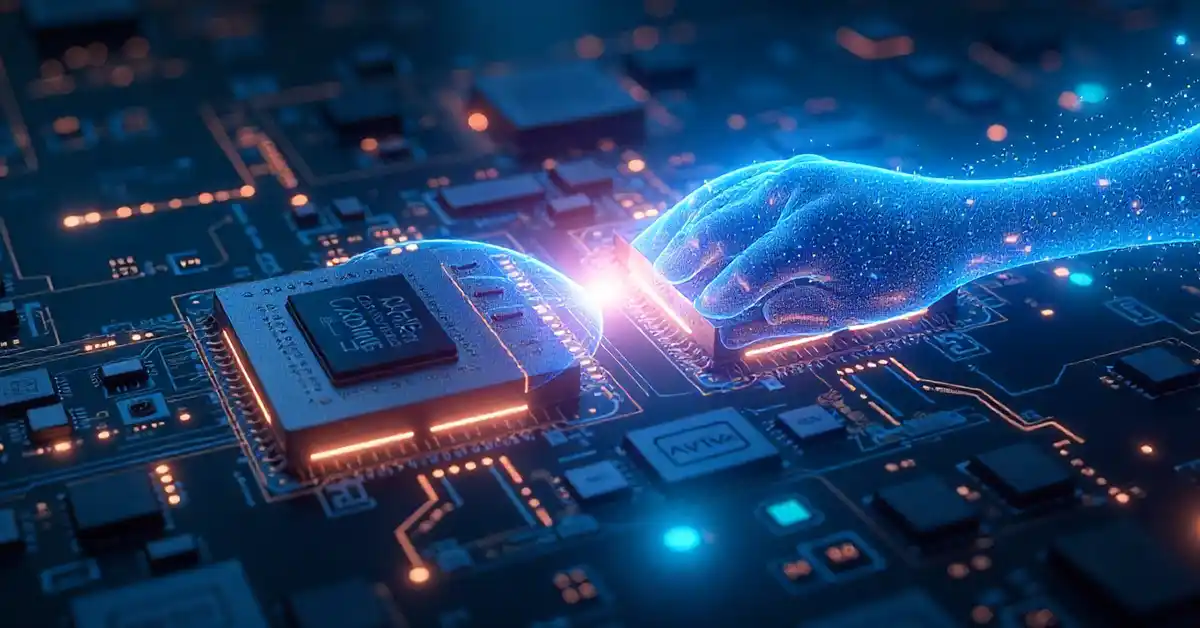Imagine a technology so versatile that it quietly powers everything from your smartphone’s responsiveness to the efficiency of massive data centers. Duaction, a term that might still be unfamiliar to many, is becoming a cornerstone in modern technological advancements. Its influence stretches across industries, shaping how devices communicate, process information, and deliver seamless user experiences.
What Is Duaction?
At its core, duaction refers to a dynamic process involving dual-action mechanisms within systems, often combining two complementary operations to achieve enhanced performance. Unlike traditional single-action processes, duaction leverages simultaneous or sequential dual functions to optimize efficiency and reliability.
This concept can be found in various forms, from mechanical systems employing two synchronized movements to software algorithms that execute paired tasks for faster processing. The beauty of duaction lies in its adaptability; it’s not confined to one field but rather manifests wherever dual processes can create synergy. For instance, in the automotive industry, duaction can be seen in hybrid engines that utilize both electric and gasoline power to maximize fuel efficiency while minimizing emissions, showcasing how this principle can lead to innovative solutions in sustainability.
Origins and Evolution
The term “duaction” emerged from engineering disciplines where dual-action pistons and valves were common. Over time, as technology advanced, the idea expanded beyond hardware. Software developers and system architects began adopting duaction principles to enhance multitasking and parallel processing capabilities. In the realm of computing, for example, duaction can enhance user experience by allowing applications to run background processes while maintaining a responsive interface, thereby improving overall functionality.
Today, duaction is a multidisciplinary concept, bridging mechanical engineering, computer science, and even artificial intelligence. Its evolution reflects a broader trend toward systems that do more with less—more output, less energy, and greater speed without sacrificing quality. In the context of AI, duaction principles can be observed in machine learning algorithms that process vast datasets simultaneously, enabling faster insights and more accurate predictions. This cross-pollination of ideas across fields not only highlights the versatility of duaction but also emphasizes its potential to drive innovation in an increasingly interconnected world.
Duaction in Hardware: Enhancing Performance and Durability
Hardware components benefit significantly from duaction principles. Consider the example of dual-action hydraulic systems used in robotics and manufacturing. These systems use two opposing forces to create smoother, more precise movements. The result is machinery that operates faster and lasts longer under demanding conditions.
Dual-Action Mechanisms in Consumer Electronics
Smartphones and laptops increasingly incorporate duaction-inspired components. Take haptic feedback systems: they often rely on two opposing actuators working in tandem to deliver nuanced vibrations. This dual-action approach creates more realistic tactile sensations, improving user interaction and satisfaction.
Similarly, cooling systems in high-performance devices sometimes use dual fans or pumps operating in coordinated cycles. This not only enhances heat dissipation but also reduces noise levels, balancing performance with user comfort. Furthermore, advancements in thermal management technologies have led to the development of dual-action heat sinks that utilize both passive and active cooling methods. By combining these techniques, devices can maintain optimal operating temperatures even during intensive tasks, thereby preventing overheating and ensuring reliability over time.
Durability Through Duality
Dual-action designs also contribute to the longevity of hardware. By distributing stress and workload across two complementary mechanisms, components experience less wear and tear. For instance, dual-action shock absorbers in vehicles and industrial equipment absorb impacts more effectively, extending the lifespan of critical parts. This principle is also evident in the design of dual-clutch transmissions in automobiles, which allow for seamless gear shifts and reduced strain on the drivetrain. As a result, vehicles equipped with such systems often exhibit improved performance and durability, making them more appealing to consumers seeking reliability in their transportation solutions.
Moreover, the application of duaction extends to the realm of power tools, where dual-action motors can enhance efficiency and reduce the risk of overheating. Tools like drills and saws that utilize this technology can operate at higher speeds while maintaining lower temperatures, which not only improves performance but also prolongs the life of the tool. This innovation is particularly beneficial in professional settings where tools are subjected to rigorous use, ensuring that they remain dependable over time and reducing the frequency of replacements.
Duaction in Software: Driving Efficiency and Responsiveness
Software systems have embraced duaction through parallel and concurrent processing techniques. Instead of executing tasks one at a time, modern applications often perform paired operations simultaneously, reducing latency and improving throughput.
Parallel Processing and Multithreading
Multithreading is a prime example of duaction in action. By splitting a program into multiple threads that run concurrently, software can handle more tasks at once. This approach is especially valuable in user interfaces, where responsiveness is critical. When one thread manages user input while another processes data, the system feels faster and more fluid.
In data-intensive applications like video rendering or scientific simulations, duaction-inspired parallelism enables complex calculations to be completed in a fraction of the time required by sequential processing. Furthermore, advancements in hardware, such as multi-core processors, have made it possible to leverage these parallel processing techniques more effectively. Each core can handle a separate thread, allowing for an exponential increase in processing capabilities. As a result, developers are increasingly designing applications that can scale efficiently across multiple cores, maximizing performance and minimizing bottlenecks.
Dual-Action Algorithms in Artificial Intelligence
Artificial intelligence systems often employ dual-action algorithms that combine two complementary methods for improved accuracy and speed. For example, some machine learning models use hybrid approaches, blending supervised and unsupervised learning techniques to better understand data patterns.
These dual-action strategies allow AI to adapt more quickly to new information, making them invaluable in fields like natural language processing and autonomous vehicles. In natural language processing, for instance, a dual-action model might first utilize unsupervised learning to identify patterns in vast datasets of text, followed by supervised learning to refine its understanding based on labeled examples. This combination not only enhances the model’s ability to interpret context and nuance but also accelerates the training process, enabling faster deployment in real-world applications. Similarly, in autonomous vehicles, dual-action algorithms can integrate real-time sensor data with pre-existing maps, allowing the vehicle to navigate complex environments with remarkable precision and responsiveness.
Duaction in Networking: Boosting Communication and Security
Networking technologies also harness duaction principles to enhance data transmission and protect information. Dual-action protocols and hardware components work together to ensure reliable and secure communication across vast digital landscapes.
Dual-Channel Communication
Many modern networks use dual-channel communication systems, where two separate data paths operate simultaneously. This setup increases bandwidth and provides redundancy, so if one channel fails, the other maintains the connection. The result is faster, more reliable internet and network services.
Security Through Dual Authentication
Security is another area where duaction plays a vital role. Dual-factor authentication (2FA) requires users to provide two different types of credentials before accessing a system. This dual-action approach significantly reduces the risk of unauthorized access, protecting sensitive data from cyber threats.
Beyond user authentication, some encryption protocols employ dual-layer encryption, combining two methods to safeguard information. This layered security model exemplifies duaction’s impact on protecting digital assets.
Real-World Applications of Duaction
Duaction’s principles are not just theoretical-they have tangible impacts across various industries. From healthcare to automotive, the dual-action approach is driving innovation and improving outcomes.

Healthcare Technology
In medical devices, duaction mechanisms enhance precision and reliability. Surgical robots, for example, use dual-action arms that mimic human dexterity, allowing surgeons to perform minimally invasive procedures with greater control.
Wearable health monitors often combine dual sensors to track vital signs more accurately. This dual-action sensing provides comprehensive data, enabling better diagnosis and personalized treatment plans.
Automotive Industry
Modern vehicles incorporate duaction in braking systems, where dual-action calipers apply balanced pressure to brake pads, improving safety and control. Additionally, hybrid and electric cars use dual-action powertrains that switch seamlessly between electric motors and combustion engines to optimize fuel efficiency.
Smart Home Systems
Smart home devices utilize duaction to enhance functionality and user experience. Thermostats, for instance, might use dual sensors to monitor both temperature and humidity, adjusting settings for optimal comfort and energy savings.
Security systems often combine dual-action detectors, such as motion sensors paired with cameras, to reduce false alarms and provide comprehensive monitoring.
Challenges and Future Directions
While duaction offers numerous benefits, it also presents challenges. Designing systems that effectively coordinate dual actions requires careful engineering and sophisticated control algorithms. Synchronization issues or conflicting operations can lead to inefficiencies or failures.

Complexity in Integration
Integrating dual-action components or processes often increases system complexity. This can raise development costs and require specialized expertise. Ensuring that both actions complement rather than interfere with each other is a delicate balancing act.
Energy Consumption Considerations
Operating two mechanisms or processes simultaneously may increase energy consumption if not optimized properly. Engineers must find ways to harness duaction’s advantages without compromising sustainability goals.
Looking Ahead
Advancements in artificial intelligence and machine learning promise to address many of these challenges. Intelligent control systems can dynamically manage dual actions, adapting to changing conditions and optimizing performance in real time.
As research continues, duaction is poised to become even more integral to technology development, unlocking new possibilities and redefining efficiency standards.
Conclusion
Duaction is more than just a technical term; it represents a powerful approach to enhancing technology across multiple domains. By leveraging dual-action mechanisms and processes, systems achieve greater efficiency, reliability, and functionality. From the devices in our hands to the networks that connect us, duaction’s impact is profound and growing.

Understanding and harnessing duaction opens doors to innovation that can transform industries and improve everyday life. As technology continues to evolve, the dual-action principle will undoubtedly play a key role in shaping the future.







